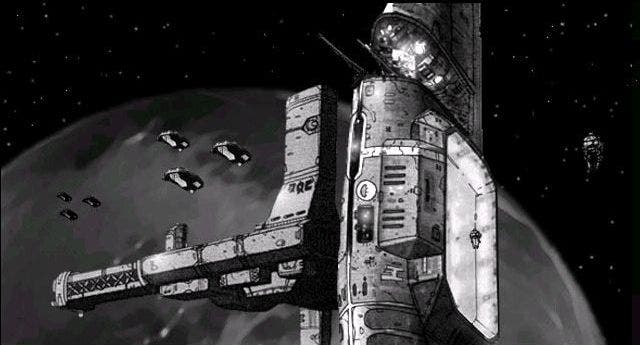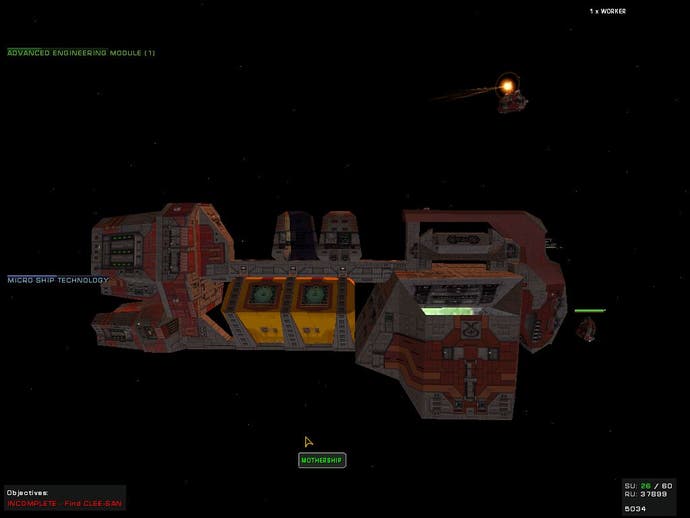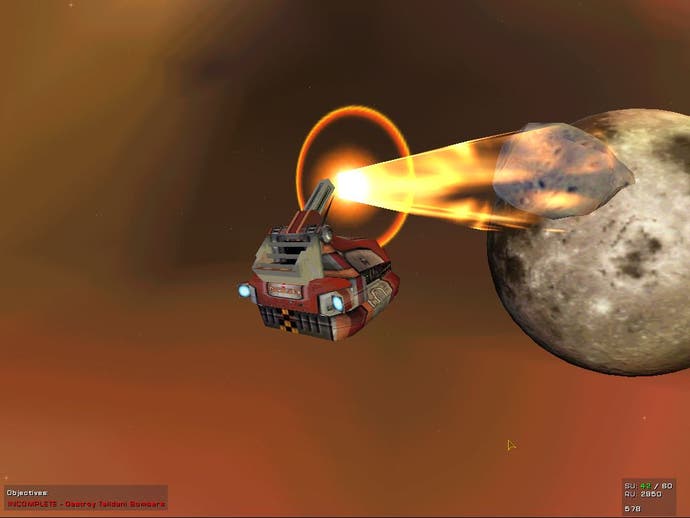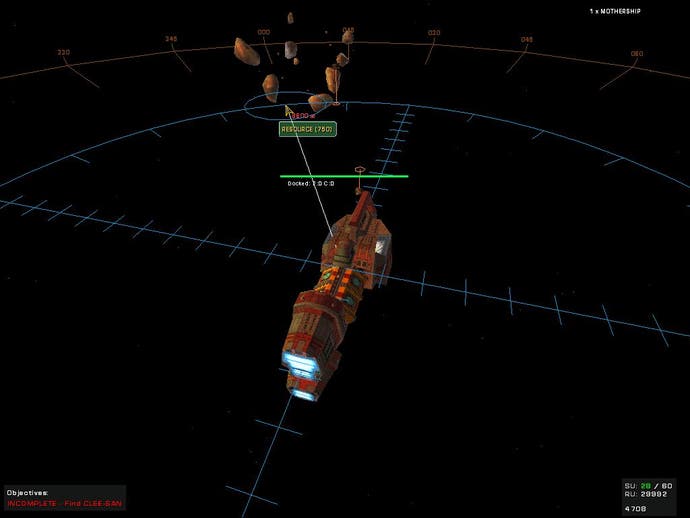Homeworld Cataclysm
Space-bound strategy game previewed
Homeworld was one of the most innovative real time strategy games of last year, a glorious 3D accelerated game set in the depths of space that put you in charge of the proverbial rag tag fleet in search of a long lost home in the stars.
The game was a critical and commercial hit, and it's no surprise then that it has already spawned a sequel, "Homeworld : Cataclysm". What is surprising is that the sequel is being crafted by Barking Dog Studios rather than the original game's developers, Relic.
We went EVA to take a look at a preview version of the new game to see if it can live up to the Homeworld name...

A New Threat
Although it is based on the same engine as the original Homeworld, Cataclysm is a full stand-alone game with its own seperate storyline, rather than "just" a mission pack.
Fifteen years have passed since the events portrayed in the first game, and the once mighty Taiidan Empire has collapsed into civil war, with Republicans and Imperial Loyalists fighting for control as pirates and raiders carve out their own niches.
Taking advantage of the chaos are your own people, the Kushan. The mothership which carried them back to Hiigara from their long exile is now orbiting the planet, acting as a space dock and construction yard. But while the rich and powerful factions rebuild your homeworld, many smaller clans are now turning to the frontier to seek their fortunes.
You command a mining vessel for one such clan, the Somtaaw, and (as is the way of the world) you have soon stumbled across a mysterious alien probe that unlocks an "ancient evil", something which could threaten the survival of the entire galaxy...

Mission : Rather Tricky
The single player game is made up of a linear series of seventeen missions, making Cataclysm slightly longer than the original Homeworld. As before, there is a strong storyline to push it all along, and missions are linked by a mixture of in-game and hand-drawn cutscenes which tell the story and give you an outline of the tasks you must accomplish in each mission.
Objectives often change during the course of a mission as you uncover more of the plot, and the game is full of twists and turns. The first few missions will see you defending other Kushan ships against Taiidan Imperialists and bandit raiders, searching for a crippled destroyer and repairing it, and even using fast moving fighters to clear a way through a mine field by "dragging" the mines away Galaxy Quest style.
Given that space is, by and large, very big and very empty, Barking Dog have done a good job of keeping the missions sufficiently interesting to keep your attention between battles.

Changes
The game's jump fifteen years into the future means that Cataclysm has an almost entirely new selection of technologies to research and ships to build.
These range from variations on the traditional fighters and destroyers of the first game, to units such as the mimic, which uses holgraphic projections to fool your enemy into believing it is something completely different. Ships can even be upgraded during a mission, allowing you to fit them with more advanced weapons, armour and engines, or to add special functions such as the ability to link multiple ships together, all without having to scrap the whole lot and build a new fleet.
The role and abilities of your base ship have changed somwhat as well, with new modules being constructed and then attached to the ship during the game. These allow you to research different types of technologies, and if you are short on resources you will need to choose which of these research modules to build first.
If Cataclysm is anything like the original, this will be especially important in multiplayer, where the entire tech tree is open to you within the space of a single mission, and the speed at which you can research new technologies can mean the difference between victory and obliteration.
In the single player game it is less of an issue, as the game is far slower paced than when you are facing real human enemies in a more free-form mission structure. In single player you are usually limited to constructing at best a couple of new modules, and researching just a handful of technologies in any one mission.

Everything Is Under Control
The already impressive graphics engine has had some tinkering under the bonnet to add dynamic lighting effects and lens flare, and many of the old effects have been replaced with bigger, more spectacular ones.
The game's interface has been given an overhaul as well, with the addition of that staple of real time strategy games - waypoints. This is something that was sorely missed in the original game, and its addition means that you can now set up patrol patterns more easily, and send your ships around minefields and other obstructions without having to guide them every step of the way.
You can also issue more commands to your ships from the sensor manager screen than in the original game, and a time acceleration feature has been added to allow you to fast forward through the dull parts, or to slow the game right down to half speed when things get really hectic. It all helps to make the control system that little bit easier to use in the heat of combat.

Conclusion
Creating a worthy successor to Homeworld was always going to be a tricky task, but from what we have seen of Cataclysm so far it looks like Barking Dog might just be on to something.
Cataclysm looks set to bring us a new dose of Homeworld, but with even better graphics, more versatile controls, and a whole new storyline. What more could you want from a sequel?

